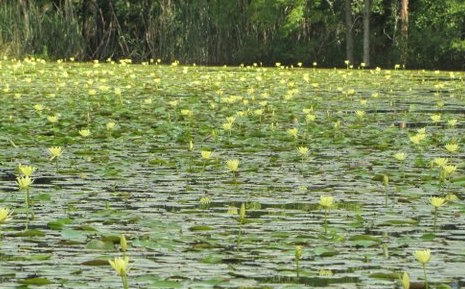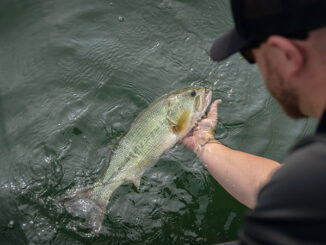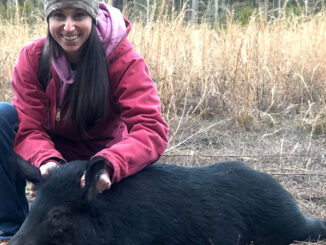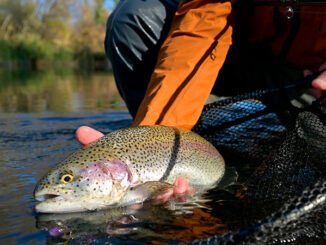
Waterfowl flock to this plant
Banana water lily is the plant that changed my hunting luck way back in 1980. I never really expected the ducks to flock to it like they have in the years since I planted it. It is amazing how many waterfowl it feeds each year, both during and after the waterfowl season.
A big variety of waterfowl puddle ducks, divers, coots and gallinules relish the seeds, tubers, and the plant itself. It establishes very well in the high organic muds of beaver swamps. This makes it an ideal waterfowl food and brood rearing area for local waterfowl. And it provides food and cover throughout the year.
A myriad of insects and crustaceans love the Banana Water Lily (Nyphaea mexicana). Waterfowl, turtles, beavers, muskrats and nutria feast on the water lilies. These animals can make it difficult for banana water lily to establish, so in the early stages, the plants must be properly protected. Once established however, they seem to have no trouble regenerating each year, providing ample food for everyone.
Protect the plant to get it established
Getting the banana water lily established in active beaver ponds requires a strategy that protects the plants from animals. We fence it off with 4 or 5 foot fencing, 2-inch x 4-inch welded wire fence, and 2 x 4 wooden posts. Some folks have success with chicken wire or plastic construction fencing. We turn out the bottom 12 inches of fence and put concrete blocks or bricks on top of the wire. This keeps beavers and turtles from burrowing under.
The banana water lilies will bloom with a yellow flower, opening and closing each day for two days. Next, the flower will recede beneath the water to coil around the base of the plant and grow into a seed pod under the water with 30 to 60 tiny, black seeds inside. When this seed pod matures, it bursts open and the seeds, which look like frog eggs, float to the surface for about 24 hours. Next, they disperse in and outside the fenced area covering the beaver pond bottom.
These plants will continue to produce flowers and seed pods (4 to 8 seed pods depending on plant age), until the fall. In the fall, the Banana Water Lily produces its most prized delight, the yellowish banana-like tubers (hibernacula) that are formed beneath the root system of the plants.
Plant reproduction
These plants reproduce in three distinct ways with seeds, rhizomes (each plant putting off horizontal rhizome roots and starting new plants) and banana-like tubers (hibernacula). Hibernacula (banana tubers) will remain dormant down in the mud and survive for years even when the water dries up. Here, they remain alive in the moist soil to renew the life cycle when the water returns to the wetland.
The fenced area will fill with the protected banana water lilies and we sometimes enlarge the fenced area to accommodate the growth. Fences allow seed production to continue for a season and float out of the protected area. Once firmly established, the banana water lily holds its own and protection can be removed.
In a small beaver pond, wood ducks and other puddle ducks are going to be the primary visitors. Wood ducks will visit year-round, and mallards, blacks, gadwalls, and teal will visit in the winter. Divers may also start to use larger beaver ponds with much open water. We have abundant waterfowl usage on sites as small as an acre and as large as 400 acres. Banana Water Lily is a prolific waterfowl food that will support waterfowl all winter long with moderate shooting pressure, and best of all, it comes back each year. It’s the waterfowler’s gift that keeps on giving.
Happy Hunting,
Jim Hills
Jim Hills is a biologist and waterfowl consultant from Georgetown, S.C. with waterfowl enhancement projects all across the United States. Contact him at www.bananawaterlilies.com or 843-546-9104




Be the first to comment